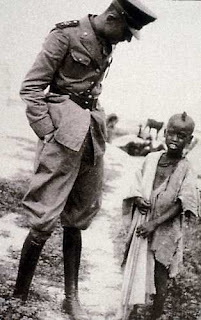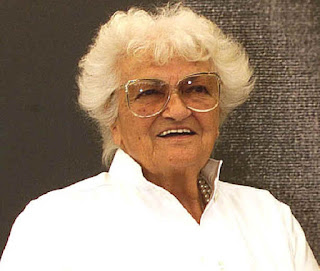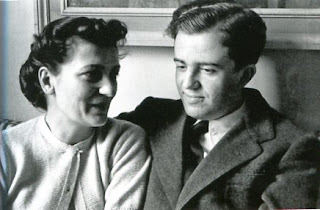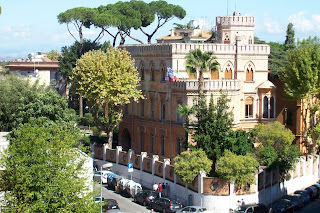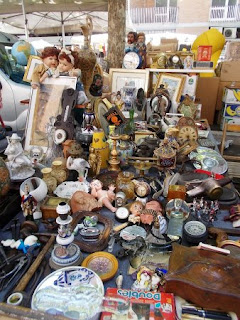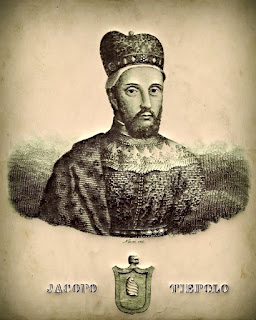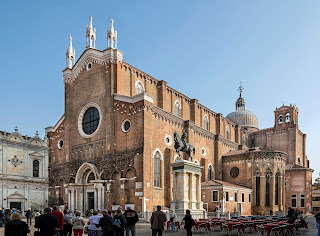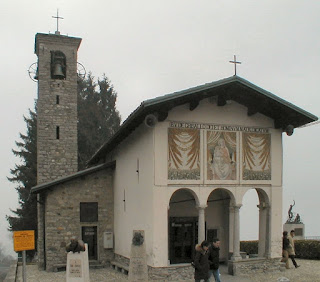Singer from Sicily who made sweet music with Callas
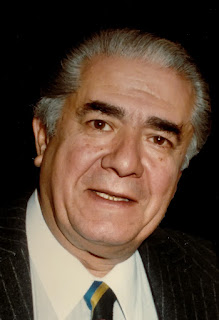 |
| Giuseppe Di Stefano was one of Italy's greatest tenors |
The opera singer Giuseppe Di Stefano, whose beautiful voice
led people to refer to him as ‘the true successor to Beniamino Gigli’, was born
on this day in 1921 in Motta Sant’Anastasia, a town near Catania in Sicily.
Di Stefano also became known for his many performances and
recordings with the soprano, Maria Callas, with whom he had a brief romance.
The only son of a carabinieri officer, who later became a
cobbler, and his dressmaker wife, Di Stefano was educated at a Jesuit seminary
and for a short while contemplated becoming a priest.
But after serving in the Italian army he took singing
lessons from the Swiss tenor, Hugues Cuenod. Di Stefano made his operatic debut
in Reggio Emilia in 1946 when he was in his mid-20s, singing the role of Des
Grieux in Massenet’s Manon. The following year he made his debut at La Scala in
Milan in the same role.
Di Stefano made his debut at the Metropolitan Opera in New
York in 1948 as the Duke of Mantua in Verdi’s Rigoletto. After his performance
in Manon a month later, a journalist wrote in Musical America that Di Stefano
had ‘the rich velvety sound we have seldom heard since the days of Gigli.’
 |
| Maria Callas and Giuseppe Di Stefano on stage in Tokyo, at around the time they had a brief affair |
He made his Royal Opera House debut in 1961 as Cavaradossi
in Tosca.
He was admired for his excellent diction, passionate
delivery and the sweetness of his soft singing.
In his Metropolitan Opera radio broadcast of Faust he
attacked the high C forte and then softened the sound to a pianissimo. Sir
Rudolf Bing, the Met's general manager wrote in his memoirs: ‘I shall never as long as I live forget the
beauty of that sound.’
Di Stefano was chosen by EMI to record all the popular
Italian operas with Maria Callas. Their 1953 studio recording of Tosca is
considered one of the greatest performances in the history of the gramophone.
The two also performed well together on stage from 1951
onwards. He sang with Callas in the famous Visconti production of La Traviata
in 1955 at La Scala and the last time they sang together in an opera was in Un
ballo in maschera at La Scala in 1957.
In 1973 Di Stefano accompanied Callas on her final recital
tour. Critics said they were both losing their voices but they were
enthusiastically received everywhere. It was during this tour that the two had
a brief romance.
Di Stefano also made recordings with a wealth of other opera
stars.
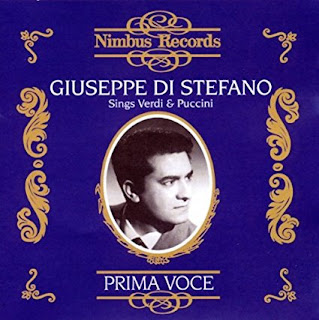 |
| Di Stefano's albums sold millions of copies |
His final operatic role was as the aged emperor in Turandot
in July 1992.
In 2004 Di Stefano suffered a brutal beating by unknown
assailants near his home in Diani Beach in Kenya after he was ambushed in his
car with his wife, Monika Curth.
The singer was still unconscious a week after the attack and
had several operations.
He was flown to Milan and admitted to the San Raffaele
clinic where he slipped into a coma.
Eventually he came out of his coma but his health never
fully improved and he died at his home in Santa Maria Hoè, between Bergamo and Como, in 2008 at the age of 86.
Luciano Pavarotti said he modelled himself on Di Stefano,
who was his idol. He said Di Stefano had ‘the most incredible, open voice you
could hear.’ Di Stefano is also said to be the tenor who most inspired José Carreras.
Travel tip:
 |
| Motta Sant'Anastasia, with a snow-covered Mount Etna in the background |
Motta Sant’Anastasia, where Di Stefano was born, is a municipality
nine kilometres (5.5 miles) west of Catania, built on a rocky outcrop not far from Mount Etna. It was inhabited by Greeks in the
fifth century BC. Roman coins and a Roman mosaic have also been discovered
there. The Tower of Motta was built in the 11th century as a defensive
structure to protect the area from Saracen invasions.
Travel tip:
Di Stefano performed regularly on the stage of Teatro alla Scala in
Milan from 1949 onwards. The theatre was officially inaugurated in 1778 after
being built on the site of the former Church of Santa Maria alla Scala to the
design of Giuseppe Piermarini. It is across the road from the Galleria Vittorio
Emanuele II, an elegant arcade lined with shops, cafes and restaurants which
links Piazza alla Scala with Piazza del Duomo, Milan’s cathedral square. La
Scala’s museum displays costumes and memorabilia from the history of opera. The
entrance is in Largo Ghiringhelli, just off Piazza alla Scala and it is open
every day except Bank Holidays.






